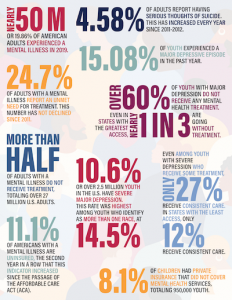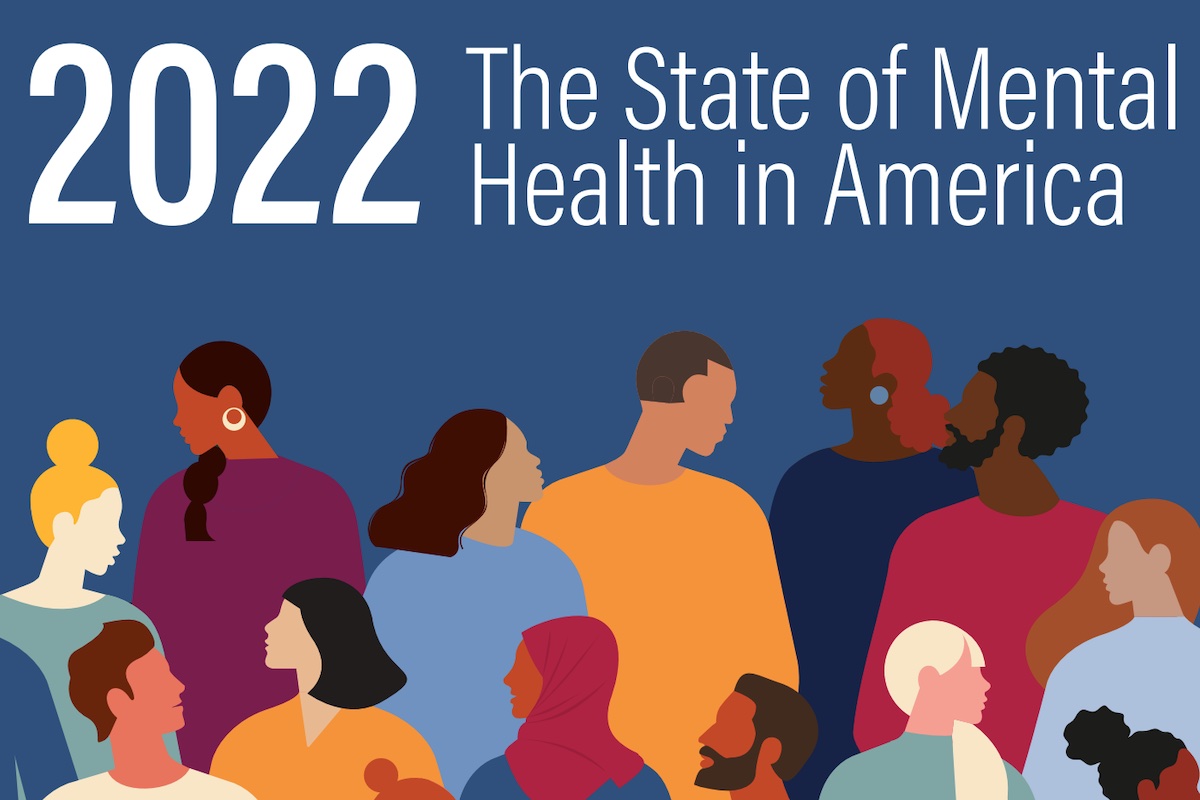
Mental Health America (MHA) released its annual State of Mental Health in America report on October 19. The report uses several questions to assess mental health support in each state. These questions include:
- How many adults and youth have mental health issues?
- How many adults and youth have substance use issues?
- How many adults and youth have access to insurance?
- How many adults and youth have access to adequate insurance?
- How many adults and youth have access to mental health care?
- Which states have higher barriers to accessing mental health care?
MHA looks at both the prevalence rate of mental illness and access to care in a state to determine rankings Mississippi was ranked 36th overall among the states (with 1st being the most desirable ranking). A closer look at the rankings revealed that Mississippi consistently placed toward the bottom of the rankings for access to care. For example, Mississippi was ranked 47th overall in access to care and 50th in access to care for youth who had experienced major depression. On the other hand, Mississippi was rated as having a low prevalence of mental illness, ranking seventh. This means that according to these findings, a smaller percentage of people in Mississippi experience mental illness than in 43 other states. It is possible that Mississippi has a higher prevalence of mental illness than what this report captured. If so, its ranking would likely be lower than 36th.
Mississippi was ranked 25th in the number of children per 1,000 who have Individual Education Program (IEPs) focused on emotional disturbances. There are many different things to consider about identifying children with emotional disturbances, but this statistic does seem to imply that children are not being over or under-identified for exceptional education services related to emotional disturbances in Mississippi. It doesn’t tell us if the services children are receiving are helping them have the same opportunity to learn as other students.
The report spotlights two areas – suicidal ideation and 988 implementation and disparities in mental health treatment for youth of color. It emphasizes the importance of a comprehensive response to crisis that includes an array of services and a well-thought-out plan to implement 988, a national number to respond to mental health emergencies.
The discussion about disparities in mental health treatment for youth of color highlights that youth of color often receive their mental health services at school and do not have access to the range of community-based services that other youth do. This disparity needs to be addressed so that all youth have access to the same range of services provided by people with whom youth feel comfortable. The report also emphasizes the importance of school-based services being as effective as possible. We certainly echo that sentiment given that children spend a great deal of time at school and mental health and school success affect each other. Addressing The Youth Mental Health Crisis: The Urgent Need For More Education, Services, And Supports, another report by MHA, outlines recommendations for responsive school-based mental health supports and services.
You can read key findings of MHA’s Report and also download the entire report at this link.

